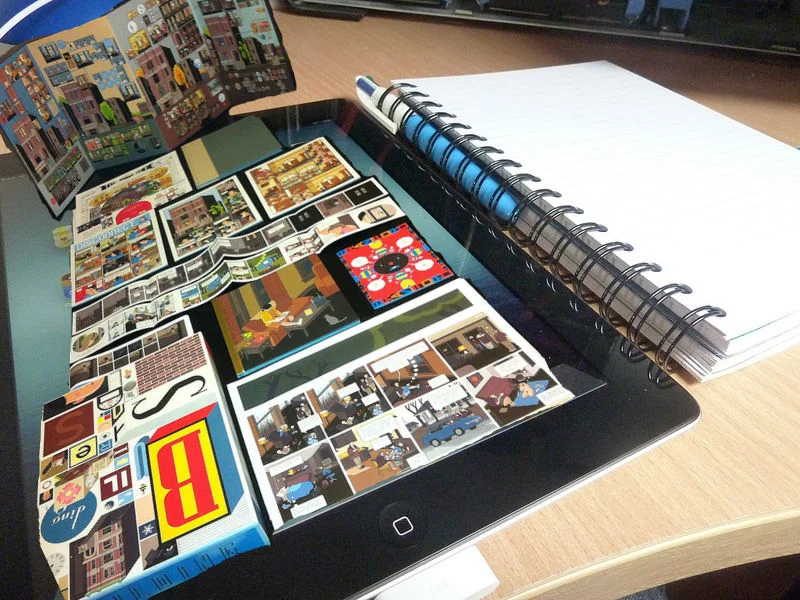Does the future of e-reading mean the death of paperback books? It's an easy dinnertime topic these days, especially on holidays. It seems that everyone can agree that we like the smell of books, and reading them in the bathtub -- but what about pictures? What does the rise of e-publishing say about the future of graphic novels?
Perusing stores like Desert Island and Forbidden Planet (whose names have a similar vibe, now that I see them together), the range of non-standard-sized books among graphic novels and comics collections is apparent. Chris Ware's massive, interactive Building Stories stands alongside Gary Panter's collection Dal Tokyo, which measures 16.25” x 6.35”. It's hard to imagine them—or any number of these titles— being desecrated into a compressed digital file.
Still, plenty of graphic novels come in a standard book size. Alison Bechdel's Are You My Mother? or Charles Burns' The Hive could ostensibly be formatted for an LCD screen. But how much would be lost in translation? This would mean sacrificing the paper weight, the binding, the color balance -- all of which the artist has certainly pored. Those are the most readily apparent artistic choices that would be given up. The graphic novel is a method of storytelling that depends so much on subtlety-- of gesture and stroke, certainly, when it comes to style. But also on a character's facial expression, a crooked smile or wrinkle of the nose that cannot be described so succinctly, so gracefully as it is drawn. And most likely wouldn't be as intelligible on a Kindle fire screen.
Anyone interested in graphic novels (and artist's books) will already be loyal to the original physical format. But the average reader, someone who may not be so familiar with comics, could go one of two ways. If she owns a Kindle already, she probably saves money by downloading free copies of Henry James novels or routinely spends $9.99 on a $14 paperback. She might look around the Strand and choose to purchase a graphic novel. For the experience of it, and for the value of it, there's more bang for her buck. Why spend $25 on a first edition hardcover when it can be delivered over the ether to your Kindle for about $10 less? A $25 graphic novel could be unwieldy, could have intricate fold-outs or be made with specialty paper, and it could have several boxes inside that make up a 3D world that you build yourself.
Alternatively, someone who has a brand spanking new e-reader, while poking around on his new toy, could come across and appreciate graphic novels for the first time via hi-definition color graphics, which are a change of pace from a regular ol' book. After all, novels are only in black and white.
There you have it: the future of publishing is graphic novels. Offscreen, they are more valuable, and mean more as experiential objects. Onscreen, they are easier than reading Ulysses. Either way, the popularity of the graphic novel will only rise with the rise of e-readers. (And either way, the Hernandez Brothers have conquered the medium.)
Credit: Flickr users smemon and akitzmil. Used with a Creative Commons license.





 A Black Balloon Publication ©
A Black Balloon Publication ©